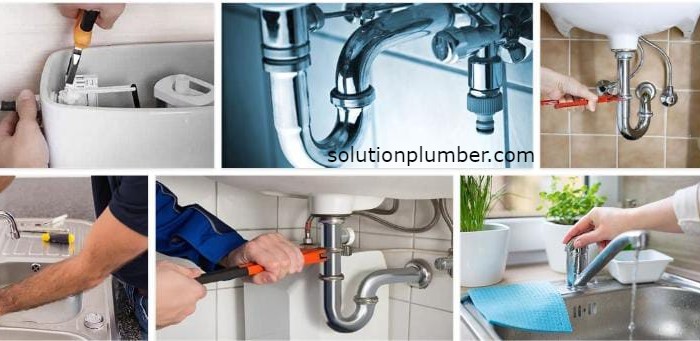or running toilet, to the more serious and expensive, such as a sewer system backup or a major pipe leak. Plumbing problems can cause severe structural damage to property and destroy the contents of a home or business.

This article outlines the most frequent difficulties that may need plumbing repairs. Of course, prevention is better than cure, and knowing the types of problems that are most likely to develop might help you avoid them or prevent them from becoming much worse.
THE 10 COMMON PLUMBING CASES
Below is the list of plumbing issues that quite occur;
- DRIPPING FAUCETS
Dripping faucet is the most plumbing problem that happens around, which cause your water bill to rise and cost you money. Over the course of a year, a single faucet might waste hundreds of gallons.
Internal washers that have grown stiff, damaged, worn, or detached over time are often the source of leaky faucets. If this is the case, a person with basic DIY skills and tools can usually solve the problem. The leaky faucet's water supply is turned off, the faucet is disassembled, the damaged washer is changed, and the faucet is then rebuilt.
- SLOW DRAINING SINK
This problem is usually caused by an obstruction that prevents water from flowing freely. Congealed fat and food fragments may be found in your kitchen sink drain. Knotted hair and soap are more likely to cause a clog in a bathroom sink.
The options for removing a clogged sink are using a plunger, baking soda and vinegar, or a chemical clog remover, or a plumber's snake. If the problem isn't addressed, it will most certainly increase over time, resulting in the drain becoming entirely blocked.
- BLOCKED BATH OR SHOWER DRAIN
Bath and shower drains, like slow-draining bathroom sinks, are frequently clogged with hair and soap clogs. Using a plunger or a plumber's snake to clear the clog is a possibility. Baking soda and vinegar have also been shown to dissolve clogs.
- CLOGGED TOILET
A clog occurs when the toilet bowl fills up and does not drain. A mixture of paper and human excrement usually causes the clog. A plunger can usually unclog a clogged toilet. If it doesn't work, you can try using a sewage snake or a drain auger to clear the clog.
- TOILET IS FLUSHING
A running toilet can be expensive, wasting up to 200 gallons of water every day. A defective flapper valve, which controls the flow of water from the tank to the bowl, is the most prevalent cause. With a toilet repair kit from any hardware shop, this is a rather simple remedy.
Toilet runs can also be produced by material obstructing the flushing and filling of the toilet. Whether your water costs are very high, try placing some food coloring in the higher tank and seeing if it makes its way to the bowl without being flushed.
- FAULTY WATER HEATER
It's possible that you won't notice the problem until you're in the shower and the water suddenly turns cold. The failure of a water heater can be caused by a variety of factors. You may need to relight the pilot light if it goes out. Sediment build-up in the tank might also cause issues. It's possible that the thermostat is to blame at other times.
- WATER PRESSURE IS LOW
It could be a sign of low water pressure if your water trickles out of the tap rather than gushing. In older homes, this is a common issue. Low water pressure is caused by a variety of factors, one of which being leaking pipes that have been cracked, worn, or corroded over time.
If you have low water pressure in your shower, it's most likely due to silt and mineral deposits on the aerators. The aerator can be cleaned by soaking it in vinegar. If the issue is with the shower, soak it in vinegar or replace it.
- GARBAGE DISPOSAL IS CLOGGED
Garbage disposals are really helpful equipment, but they can occasionally become clogged. Running them without water, discarding certain food substances like cornhusks and potato peels, or letting silverware to enter can all cause issues.
- LEAKY PIPES
Leaky pipes are more than a headache. They may harm furniture and floors, and the wetness can attract vermin such as cockroaches. Almost all leaks occur at the pipe junctions. Tape, compounds, and fillers can often give a temporary remedy, but you'll need to replace a piece of pipe or the accompanying fittings for a more permanent solution. This may need the assistance of a plumber.
- SEWER SYSTEM BACKUP
Backups of sewer systems are, to put it bluntly, a nightmare. They can be smelly, unpleasant, unsanitary, troublesome, and costly to repair. This is most likely your issue if you have many drains and toilets that aren't working and a strong odor of human waste.
The location of the blockage determines who is responsible for resolving the problem. It's your problem if it's on your property. If it's on a public road, your water company is responsible for fixing it. Unfortunately, hiring a plumber to discover the obstruction may be necessary, however it's generally worth phoning your water company first if you feel the blockage isn't on your home.
There are three common causes of sewer system backup broken;
- First, The main sewer is clogged. To solve this, you'll almost certainly require professional assistance. To prevent this from happening again, be careful what you flush down the toilet (no diapers, face wipes, or napkins) and don't pour grease down the drain.
- The pipes have also been infiltrated by tree roots. Roots can push through pipe fractures or surround and destroy a pipe.
- Third, aged sewer pipes are prone to breaking or collapsing. Sewer lines are now made of plastic, but in the past, they were made of cast iron or clay, both of which are subject to degrade over time.